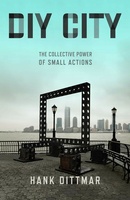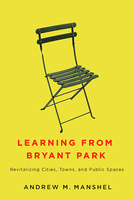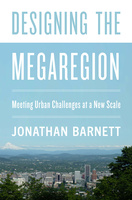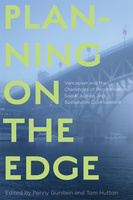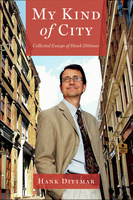Showing 31-40 of 118 items.
DIY City
The Collective Power of Small Actions
By Hank Dittmar
Island Press
Hank Dittmar, urban planner, friend of artists and creatives, sometime rancher, “high priest of town planning” to the Prince of Wales, believed in letting small things happen. Looking at the global cities of the world, he saw a crisis of success, with gentrification and global capital driving up home prices in some cities, while others decayed for lack of investment.
In DIY City, Dittmar explains why individual initiative, small-scale business, and small development matter, with lively stories from his own experience and examples from recent history.
Dittmar’s timely response to the challenges many cities face today is to make Do-It-Yourself the norm rather than the exception by removing the barriers to small-scale building and local business. The message of DIY City can offer hope to anyone who cares about cities.
In DIY City, Dittmar explains why individual initiative, small-scale business, and small development matter, with lively stories from his own experience and examples from recent history.
Dittmar’s timely response to the challenges many cities face today is to make Do-It-Yourself the norm rather than the exception by removing the barriers to small-scale building and local business. The message of DIY City can offer hope to anyone who cares about cities.
Learning from Bryant Park
Revitalizing Cities, Towns, and Public Spaces
Rutgers University Press
Andrew M. Manshel helped transform New York’s Bryant Park from a blighted eyesore to a vibrant destination, then applied its strategies to an equally successful renewal project in a very different neighborhood: Jamaica, Queens. Here, he candidly describes what does (and doesn’t) work when coordinating urban redevelopment projects.
Changing Neighbourhoods
Social and Spatial Polarization in Canadian Cities
UBC Press
Changing Neighbourhoods offers revealing insights into the way that Canadian cities have grown increasingly unequal and polarized since 1980, identifying the causal factors driving neighbourhood change and their troubling implications.
Designing the Megaregion
Meeting Urban Challenges at a New Scale
Island Press
In Designing the Megaregion, planning and urban design expert Jonathan Barnett takes a fresh look at designing megaregions. Barnett argues that planning megaregions requires ecological literacy and a renewed commitment to social equity in order to address the increasing pressure that growth puts on natural, built, and human resources. If current trends continue, new construction in megaregions will put additional stress on natural resources, make highway gridlock and airline delays much worse, and cause each region to become more separate and unequal. Barnett offers an incremental approach to designing at the megaregional scale that will help prepare for future economic and population growth.
There is an urgent need to begin designing megaregions, and Barnett offers a hopeful way forward using systems that are already in place.
There is an urgent need to begin designing megaregions, and Barnett offers a hopeful way forward using systems that are already in place.
Five Rules for Tomorrow's Cities
Design in an Age of Urban Migration, Demographic Change, and a Disappearing Middle Class
Island Press
As urban designers respond to the critical issue of climate change they must also address three cresting cultural waves: the worldwide rural-to-urban migration; the collapse of global fertility rates; and the disappearance of the middle class. In Five Rules for Tomorrow’s Cities, planning and design expert Patrick Condon offers five rules to help urban designers assimilate these interconnected changes into their work: (1) See the City as a System; (2) Recognize Patterns in the Urban Environment; (3) Apply Lighter, Greener, Smarter Infrastructure; (4) Strengthen Social and Economic Urban Resilience; and (5) Adapt to Shifts in Jobs, Retail, and Wages.
Five Rules for Tomorrow’s Cities provides grounded and financially feasible design examples for tomorrow’s sustainable cities, and the design tools needed to achieve them.
Five Rules for Tomorrow’s Cities provides grounded and financially feasible design examples for tomorrow’s sustainable cities, and the design tools needed to achieve them.
Planning on the Edge
Vancouver and the Challenges of Reconciliation, Social Justice, and Sustainable Development
Edited by Penny Gurstein and Tom Hutton
UBC Press
Planning on the Edge explores the reality behind the rhetoric of Vancouver’s reputation as a sustainable city and paves the way for developing Vancouver and its region into a place that is both economically sustainable and socially just.
My Kind of City
Collected Essays of Hank Dittmar
By Hank Dittmar
Island Press
In My Kind of City, Dittmar has organized his selected writings into ten sections with original introductions. His observations range on scale from local (“My Favorite Street: Seven Dials, Covent Garden, London”) to national (“Post Truth Architecture in the Age of Trump”) and global (“Architects are Critical to Adapting our Cities to Climate Change”). Andrés Duany writes of Hank in the book foreword, “He has continued to search for ways to engage place, community and history in order to avoid the tempting formalism of plans.”
The range of topics covered in My Kind of City reflects the breadth of Dittmar’s experience in working for better cities for people. Common themes emerge in the engaging prose including Dittmar’s belief that improving our cities should not be left to the “experts”; his appreciation for the beautiful and the messy; and his rare combination of deep expertise and modesty. As Lynn Richards, CEO of Congress for the New Urbanism expresses in the preface, “Hank’s writing is smart without being elitist, witty and poetic, succinct and often surprising.”
My Kind of City captures a visionary planner’s spirit, eye for beauty, and love for the places where we live.
The range of topics covered in My Kind of City reflects the breadth of Dittmar’s experience in working for better cities for people. Common themes emerge in the engaging prose including Dittmar’s belief that improving our cities should not be left to the “experts”; his appreciation for the beautiful and the messy; and his rare combination of deep expertise and modesty. As Lynn Richards, CEO of Congress for the New Urbanism expresses in the preface, “Hank’s writing is smart without being elitist, witty and poetic, succinct and often surprising.”
My Kind of City captures a visionary planner’s spirit, eye for beauty, and love for the places where we live.
Climate Action Planning
A Guide to Creating Low-Carbon, Resilient Communities
Island Press
Climate Action Planning is designed to help professionals working at local levels to develop and implement plans to mitigate a community's greenhouse gas emissions and increase the resilience of communities against climate change impacts. This fully revised and expanded edition goes well beyond climate action plans to examine the mix of policy and planning instruments available to every community.
Climate Action Planning is the most comprehensive book on the state of the art, science, and practice of local climate action planning. It should be a first stop for any local government interested in addressing climate change.
Climate Action Planning is the most comprehensive book on the state of the art, science, and practice of local climate action planning. It should be a first stop for any local government interested in addressing climate change.
Vancouverism
UBC Press, On Point Press
This is the remarkable story, told by a key insider, about Vancouver’s dramatic transformation from a typical mid-sized North American city into an inspiring world-class metropolis celebrated for its liveability, sustainability, and vibrancy.
The Heart of the City
Creating Vibrant Downtowns for a New Century
Island Press
In The Heart of the City, distinguished urban planner Alexander Garvin shares lessons on how to plan for a mix of housing, businesses, and attractions; enhance the public realm; improve mobility; and successfully manage downtown services. Garvin opens the book with diagnoses of downtowns across the United States, including the people, businesses, institutions, and public agencies implementing changes. In a review of prescriptions and treatments for any downtown, Garvin shares brief accounts—of both successes and failures—of what individuals with very different objectives have done to change their downtowns. The final chapters look at what is possible for downtowns in the future, closing with suggested national, state, and local legislation to create standard downtown business improvement districts to better manage downtowns.
This book will help public officials, civic organizations, downtown business property owners, and people who care about cities learn from successful recent actions in downtowns across the country, and expand opportunities facing their downtown. Garvin provides recommendations for continuing actions to help any downtown thrive, ensuring a prosperous and thrilling future for the 21st-century American city.
This book will help public officials, civic organizations, downtown business property owners, and people who care about cities learn from successful recent actions in downtowns across the country, and expand opportunities facing their downtown. Garvin provides recommendations for continuing actions to help any downtown thrive, ensuring a prosperous and thrilling future for the 21st-century American city.
Stay Informed
Subscribe nowRecent News

